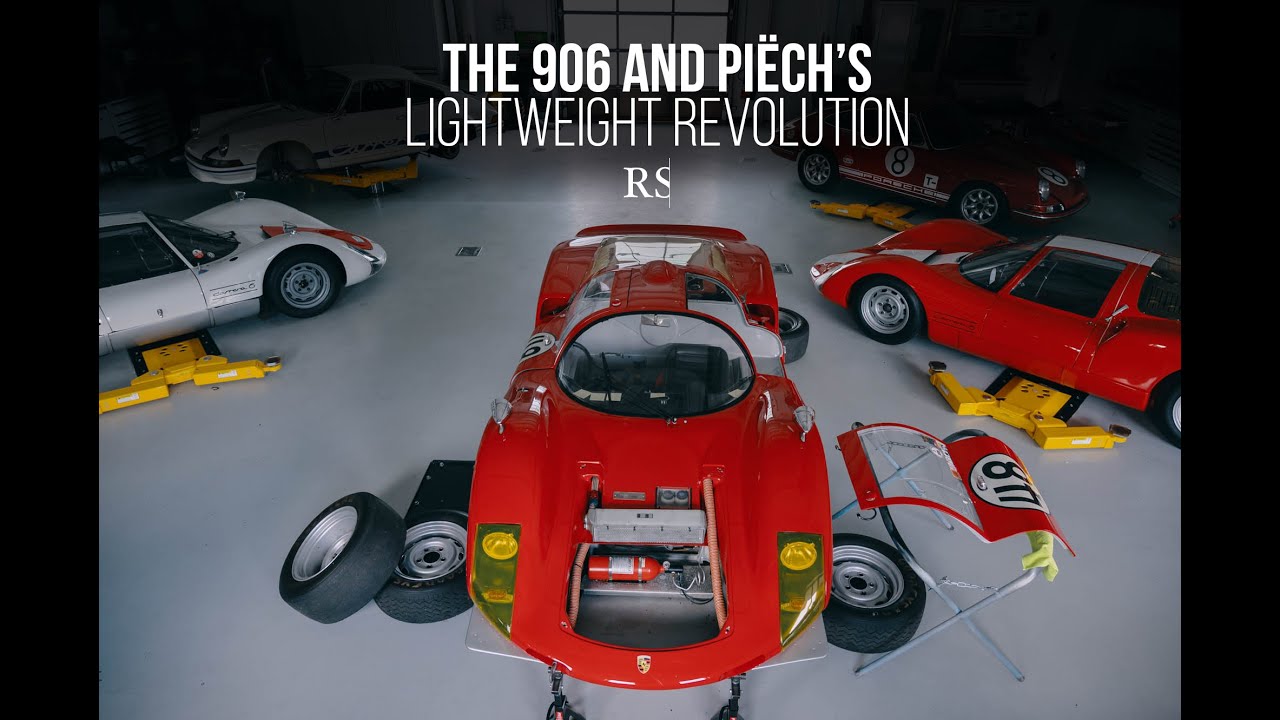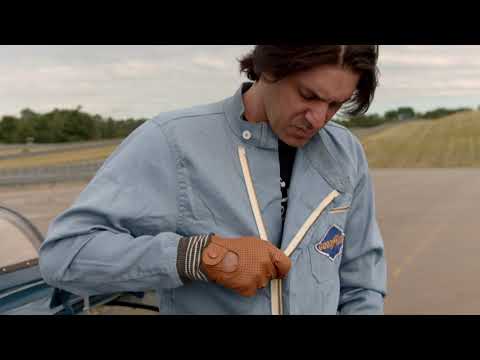The 906 and Piëch’s lightweight revolution
29-year-old Ferdinand Piëch became the new head of Porsche Research and Development. His vision was to create an entirely new generation of race cars. The 906 Carrera 6 kept the basic layout of the 904, with the engine mounted ahead of the transaxle for optimal weight distribution, but this time mounted in a light and rigid tubular space frame. The body of the 906 was developed in the wind tunnel for optimal aerodynamic efficiency, resulting in a curvaceous body with a 0.35 drag coefficient. Large ducts behind the gullying-style doors fed cool air to the rear brakes and transaxle, while ducts at the nose directed air to the oil-cooler. It was a radical departure from the sculpted shape of the 904, but perhaps a visual representation of the beginning of Piëch’s revolution.
Since there were ample extras from the 904’s planned second production run, the independent suspension components received minor modifications and were incorporated in the 906. Piëch had originally wanted to use 13-inch diameter Formula One wheels to lower the new car’s profile, but Porsche could not afford to write off the expense of the large quantity of 15-inch wheels intended for the 904’s canceled second wave of production. The steeply arched front fenders were a result of having to run the larger diameter wheels.
Beneath the yellow-tinted and louvered plexiglass rear window, a pair of Weber triple-throat carburetors peek through openings in the rear clamshell. The 1991-cc air-cooled flat-six was essentially the same as that found in the production 911, albeit optimally tuned for racing with a 10.3:1 compression ratio. The connecting rods were constructed from titanium and the crankshaft of forged steel, while in the crankcase sodium-filled exhaust valves were used in the cylinder heads. Horsepower was conservatively rated at 210 horsepower at 8,000 rpm and torque rated at 146 lb-ft at 6,000 rpm. The fully synchronized 5-speed transmission was also production-based, although available with a range of gear sets to suit the type of competition it was destined for. The 906 weighed in at a scant 1,275 pounds with oil and a dry fuel tank and could reach a top speed of approximately 170 mph.
The 906 debuted at the 1966 24 Hours of Daytona, where it finished in 6th place overall and won the Sports 2.0-liter class. It repeated the victory seven weeks later against the Dino at Sebring, and again at 1000-km races at Monza, Spa, and Nürburgring. A semi-privately entered 906 won overall at the 1966 Targa Florio, once again besting the Ferrari Dinos. At the 24 Hours of Le Mans, the 906s took positions 4-5-6-7, right behind the big-block V-8 powered Ford GT40 MKIIs.
Throughout the world, there continued to be numerous 906 victories over the years. Competition tends to take its toll on the cars and many are crashed, repaired, or altogether destroyed. Of the 65 906’s built only 40 exist today.
Since there were ample extras from the 904’s planned second production run, the independent suspension components received minor modifications and were incorporated in the 906. Piëch had originally wanted to use 13-inch diameter Formula One wheels to lower the new car’s profile, but Porsche could not afford to write off the expense of the large quantity of 15-inch wheels intended for the 904’s canceled second wave of production. The steeply arched front fenders were a result of having to run the larger diameter wheels.
Beneath the yellow-tinted and louvered plexiglass rear window, a pair of Weber triple-throat carburetors peek through openings in the rear clamshell. The 1991-cc air-cooled flat-six was essentially the same as that found in the production 911, albeit optimally tuned for racing with a 10.3:1 compression ratio. The connecting rods were constructed from titanium and the crankshaft of forged steel, while in the crankcase sodium-filled exhaust valves were used in the cylinder heads. Horsepower was conservatively rated at 210 horsepower at 8,000 rpm and torque rated at 146 lb-ft at 6,000 rpm. The fully synchronized 5-speed transmission was also production-based, although available with a range of gear sets to suit the type of competition it was destined for. The 906 weighed in at a scant 1,275 pounds with oil and a dry fuel tank and could reach a top speed of approximately 170 mph.
The 906 debuted at the 1966 24 Hours of Daytona, where it finished in 6th place overall and won the Sports 2.0-liter class. It repeated the victory seven weeks later against the Dino at Sebring, and again at 1000-km races at Monza, Spa, and Nürburgring. A semi-privately entered 906 won overall at the 1966 Targa Florio, once again besting the Ferrari Dinos. At the 24 Hours of Le Mans, the 906s took positions 4-5-6-7, right behind the big-block V-8 powered Ford GT40 MKIIs.
Throughout the world, there continued to be numerous 906 victories over the years. Competition tends to take its toll on the cars and many are crashed, repaired, or altogether destroyed. Of the 65 906’s built only 40 exist today.
People In This Video
No users are tagged in this video



